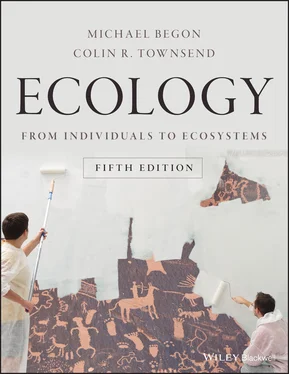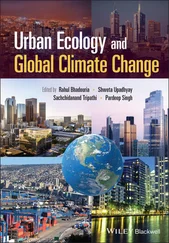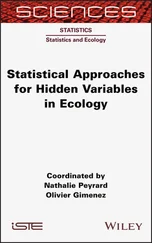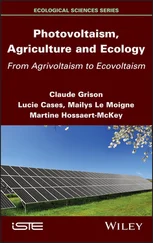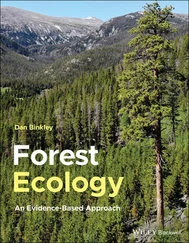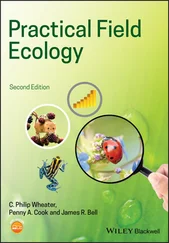
Figure 3.16 Aquatic plants may be limited in their photosynthetic ability by the availability of CO 2. (a) The relative growth rate (RGR, rate of growth per unit weight) for 10 species of aquatic plants, as indicated, when water was at equilibrium with the surrounding air with respect to CO 2(low‐C) such that the contribution of CO 2to dissolved inorganic carbon (compared with bicarbonate) was relatively small, and when CO 2was continually passed into the water (high‐C) such that the contribution of CO 2was large. In a two‐way analysis of variance, the effects of species and treatment were both significant (respectively, F = 11.6, P < 0.0001 and F = 52.9, P < 0.0001). (b) The leaf nitrogen content of the same 10 species in the same treatments. Again, the effects of species and treatment were both significant (respectively, F = 9.1, P < 0.0001 and F = 101.4, P < 0.0001). Means and SEs are shown in both parts.
Source : After Hussner et al . (2016).
These variations in CO 2availability, along with associated variations in, for example, the difficulties of capturing CO 2while avoiding the loss of water, have led to the widespread evolution of carbon concentrating mechanisms (CCMs) that increase the availability of CO 2at the metabolic sites where it is required. Hence, while one might expect a process as fundamental to life on earth as carbon fixation in photosynthesis to be underpinned by a single unique biochemical pathway, in fact, even in higher plants there are three such pathways (and variants within them): the C 3pathway (the most common), the C 4pathway and CAM. The ecological consequences of the different pathways are profound, especially as they affect the reconciliation of photosynthetic activity and controlled water loss (see Section 3.3.1). Even in aquatic plants, where water conservation is not normally an issue, and most plants use the C 3pathway, there are many CCMs that serve to enhance the effectiveness of CO 2utilisation (Griffiths et al ., 2017). These CCM‐based pathways are of profound importance. The C 4and CAM pathways account for 18–30% of the 60 Pg (approximately) of carbon assimilated each year on land; while CCMs in cyanobacteria and algae account for more than half the 50 Pg of carbon assimilated each year in the oceans (Raven et al ., 2008).
the C 3pathway
In the C 3pathway, the Calvin–Benson cycle, CO 2is fixed, through combination with ribulose 1,5‐biphosphate (RuBP), into a three‐carbon acid (phosphoglyceric acid) by the enzyme RuBisCO (ribulose‐1,5‐biphosphate carboxylase‐oxygenase), which is present in massive amounts in the leaves (25–30% of the total leaf nitrogen). This same enzyme can also act as an oxygenase, as its name indicates, and this activity (photorespiration) can result in a wasteful release of CO 2– reducing by about one‐third the net amounts of CO 2that are fixed. Photorespiration increases with temperature with the consequence that the overall efficiency of carbon fixation declines with increasing temperature.
The rate of photosynthesis of C 3plants increases with the intensity of radiation, but reaches a plateau. In many species, particularly shade species, this plateau occurs at radiation intensities far below that of full solar radiation (see Figure 3.4). Plants with C 3metabolism have low water‐use efficiency compared with C 4and CAM plants (see later), mainly because in a C 3plant, CO 2diffuses rather slowly into the leaf and so allows time for a lot of water vapour to diffuse out of it through the open stomata.
The rate of photosynthesis of C 3plants also increases with the concentration of CO 2within the plant, and because of the slow rate of diffusion, with the concentration of CO 2in the atmosphere (see later). However, this rate is limited by the ability of C 3plants to regenerate RuBP with which CO 2can be combined, and therefore levels off as CO 2concentrations increase.
the C 4pathway
In the C 4pathway, the Hatch–Slack cycle, the C 3pathway is present but it is confined to cells deep in the body of the leaf. CO 2that diffuses into the leaves via the stomata meets mesophyll cells containing the enzyme phosphoenolpyruvate (PEP) carboxylase. This enzyme combines atmospheric CO 2with PEP to produce a four‐carbon acid. This diffuses, and releases CO 2to the inner cells where it enters the traditional C 3pathway. PEP carboxylase has a much greater affinity than RuBisCO for CO 2. There are profound consequences.
First, C 4plants can absorb atmospheric CO 2much more effectively than C 3plants and the rate of photosynthesis is therefore much less dependent on CO 2concentrations (but see later). Also, because of the reduced need to keep stomata open, C 4plants may lose much less water per unit of carbon fixed. Furthermore, the wasteful release of CO 2by photorespiration is almost wholly prevented and, as a consequence, the efficiency of the overall process of carbon fixation does not change with temperature. Finally, the concentration of RuBisCO in the leaves is a third to a sixth of that in C 3plants, and the leaf nitrogen content is correspondingly lower. As a consequence of this, C 4plants are much less attractive to many herbivores and also achieve more photosynthesis per unit of nitrogen absorbed.
It may seem surprising that C 4plants, with such high water‐use efficiency, have failed to dominate the vegetation of the world, but there are clear costs to set against the gains. The C 4system has a high light compensation point and is inefficient at low light intensities; C 4species are therefore ineffective as shade plants. Moreover, C 4plants have higher temperature optima for growth than C 3species: most C 4plants are found in arid regions or the tropics. The pathway is widely distributed amongst plant families but is most prominent in grasses, where many of the attempts to account for the distributions of C 3and C 4species have been focused.
The most common approach to understanding the proportion of C 3and C 4plants in any region goes back to Collatz et al . (1998). It involves the identification of a climatological crossover temperature, above and below which C 4and C 3plants, respectively, are favoured – that is, they have a carbon gain advantage – and also a level of precipitation sufficient for plants of both types to grow. Collatz et al . estimated these for grasses to be a mean daytime temperature of 22°C and precipitation of at least 25 mm per month. Then, for example, the number of months in the year typically favouring C 4growth may be used to account, statistically, for the proportion of C 4grasses in a local flora. Subsequent refinements of the approach have re‐estimated those growth criteria or acknowledged the importance of factors beyond temperature and precipitation. Thus, for instance, Griffith et al . (2015) explored a range of mean, minimum and maximum monthly temperatures for grasses in the USA and then found that the best fitting model was based on exceeding a monthly maximum temperature of 27°C, not a mean of 22°C (but still a mean monthly precipitation ≥25 mm; Figure 3.17). However, while this combination of temperature and precipitation thresholds was powerful in accounting for the distribution of C 4grasses, in a number of regions, further factors were also important. In the Eastern Temperate Forest region, for example, there was a strong negative effect of tree cover on the proportion of C 4grasses, since their shade promotes the cooler growing conditions more favourable to C 3grasses; while in the Temperate US Sierras, there was a strong negative effect of mean annual precipitation, though whether this is favourable to C 3grasses, unfavourable to C 4grasses, or favourable to other plants that increase shading is uncertain.
Читать дальше
